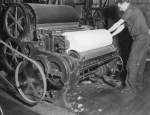 In my last post, I started to show the main reasons why EPEI leveling with a fixed repeating schedule so often fails (for details on EPEI leveling, see Theory of Every Part Every Interval (EPEI) Leveling). This post continues with more reasons and also gives some advice on how to reduce the damage or even increase its chances of success. It also has a suggestion for a test to determine if your system is ready for leveling.
In my last post, I started to show the main reasons why EPEI leveling with a fixed repeating schedule so often fails (for details on EPEI leveling, see Theory of Every Part Every Interval (EPEI) Leveling). This post continues with more reasons and also gives some advice on how to reduce the damage or even increase its chances of success. It also has a suggestion for a test to determine if your system is ready for leveling.
Again, there seems to be a lean religion that claims that putting up a leveling box will lead to salvation. Well, Lean is not a religion or magic. Lean is hard work, and you actually need to understand what you are doing. Just copying something without understanding is a good way to fail, especially with leveling.






